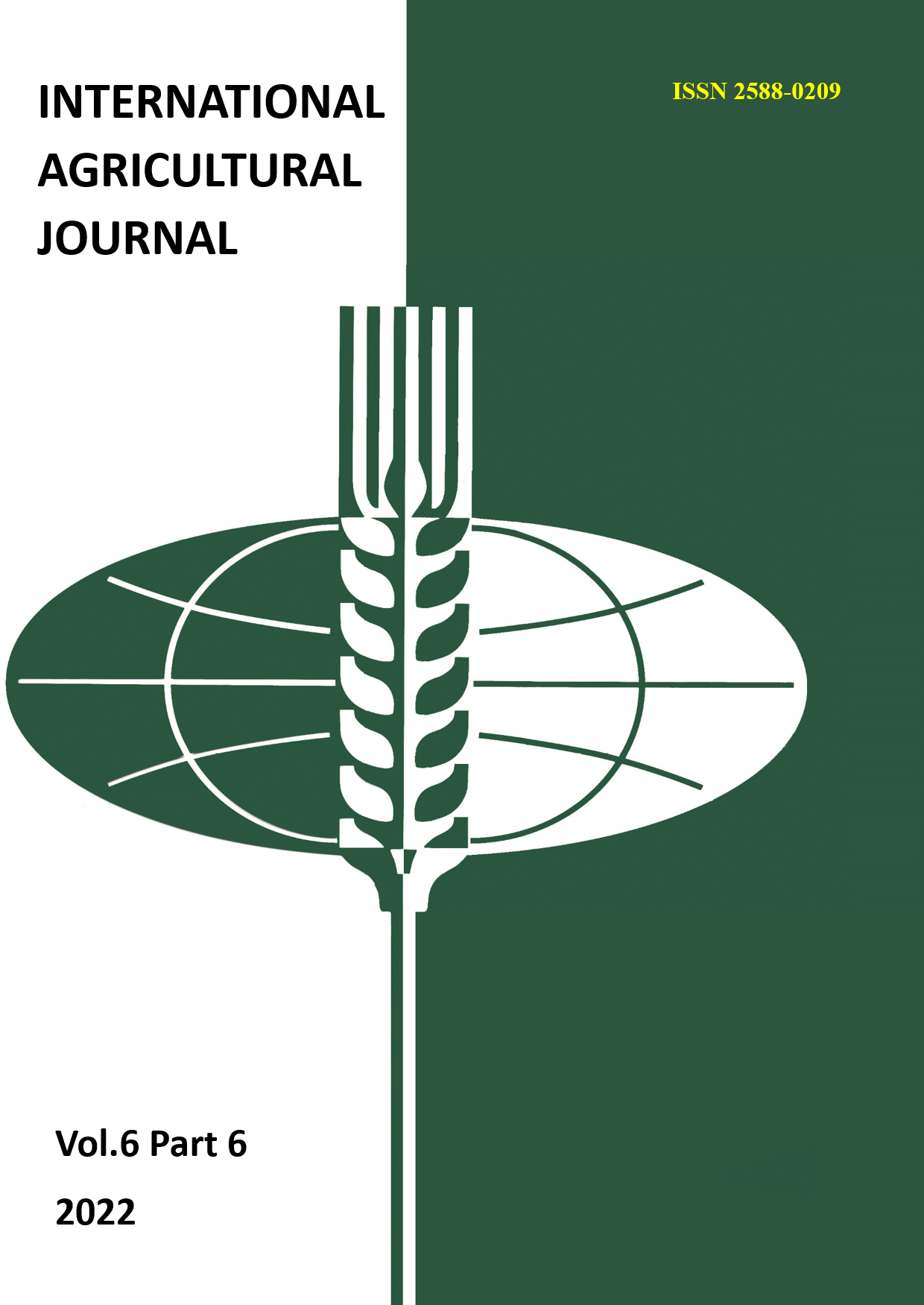METHODOLOGY OF STUDY OF TECHNOGENIC SOIL DEGRADATION OF THE AZOV-KUBAN LOWLAND
Main Article Content
Abstract
Man-made soil degradation, which is "... an unintended consequence of farming..." leads to very significant changes in the structure of the soil cover, composition and properties of soils, leading to a decrease in their production value. A study of approaches and methods for identifying technogenically degraded soils intensively used in agricultural production A methodology for studying technogenically degraded soils - key sites along the catena is proposed, their area is statistically substantiated.. The regularities of the formation of the plow sole have been established - the power from 10-12 cm in the territory adjacent to the west is up to 8-9 cm on the sides (slopes) and 6-7 cm in the bottom of the west. The depth of its appearance is from 24-27 cm on the plaque to 19-22 cm in the bottom of the west. Dataon the relief and relative heights of the places of laying soil sections by constructing a digital model of the relief (DEM) are irradiated. ), used a freely distributed SRTM image, the pixel size of which is 30x20 meters. The discreteness of the distribution of height values is 1 m. To extract data on the relative heights of the route path line and soil sections, a special style of visualization of geographically distributed data was programmed into the GIS, which includes a command for extracting the numerical value of the height in the Python language syntax, which made it possible to obtain an idea of the heterogeneity of the surface relief of the soil cover. The possibilities of using remote sensing materials of the earth (ERS) have been studied, their advantages and limitations have been established. Using Quick Bird and Google satellite images, amap of technogenic degradation of a fragment of the territory of the Timashevsky district of the Krasnodar Territory has been prepared. Advantages and disadvantages of level surveying in comparison with remote sensing materials.
Article Details
References
2. Vinogradov, B.V. Aerospace monitoring of ecosystems / B.V Vino-gradov. M.: Nauka, 1984. -320 p.
3. Vlasenko, V.P. Degradation processes in the soils of the Krasnodar Territory and methods of their regulation: monograph / Vlasenko V.P., Terpelets V.I.// Krasnodar, KubGAU, 2012.-205p.
4. Vlasenko, V.P. Methodological aspects of the choice of diagnostic criteria for hydrometeorology in the chernozems of the Western Ciscaucasia / Vlasenko V.P., Terpelets V.I.// sb. scientific. Tr. KubGAU – Krasnodar, 2010. –Vol. 6(27)-S. 19-24.
5. Globus A.M. Soil-hydrophysical support of agroecological mathematical models/A.M. Globus // L.: Gidrometeoizdat. 1987. 428s. Dimitrova, R. I. Issledovanie nastya shrinkage claynykh gruntov / R. I.
6. Dimitrova// Avtoref. cand. diss. M.: MGU, 1974. p. 26.
7. Zaydelman, F.R. Genetic features and hydrophysical properties of soils of steppe and mocharnye landscapes / F.R. Zaydelman, A.I. Davydov, I.Y. Davydova // Vestn. Mosk. un-ta. Sir. Soil science. 1993.№ 1. S. 15-21.
8. Zaydelman F.R., Tulipanov V.I., E.N. Angelov, Davydova I.Y. Soils of urinary landscapes - formation, agroecology and melioration / F.R. Zaydelman, V.I. Tulipanov, E.N. Angelov, I.Yu. Davydova // M.: Izd. Moscow State University, 1998, 160 p.
9. Kozlovsky, F. I. On the anthropogenic degradation of the southern chernozem in connection with compaction / Kozlovsky F. I., Tselishcheva L. K.// Geography and genesis of anthropogenic soils. M.: Tr. Soil, institute named after V. V. Dokuchaev, 1986. S. 62-71.
10. Kornblum, E.A. On the role of changes in density and hardness in the formation of merged soils of kuban / E.A. Kornblum., I.N. Lyubimova, A.M. Ivanov // Soil Science. 1977. № 1. S. 14-30.
11. Nazarenko, O.G. Modern processes of development of local hydro-morphic complexes in steppe agrolandscapes/ O.G. Nazarenko // Avtoref. diss. for the purpose of academic art. ...
12. Prokhorov, A.N., Approaches to the calculation of indicators for monitoring the physical state of soils / A.N. Prokhorov, P.M. Sapozhnikov // Soil Science.1992. №9. P.52-64.
13. Overcompaction of arable soils. Causes, consequences, ways of reduction // M.: Nauka, 1987. 215 p.
14. Sadovnikov, Yu.N. Spectrophotometric method of soil characteristics, soil color and quantitative regularities of light reflection by soils / Yu.N. Sadovnikov, D.S. Orlov // Agrochemistry, 1978, No4, P. 133-151.

